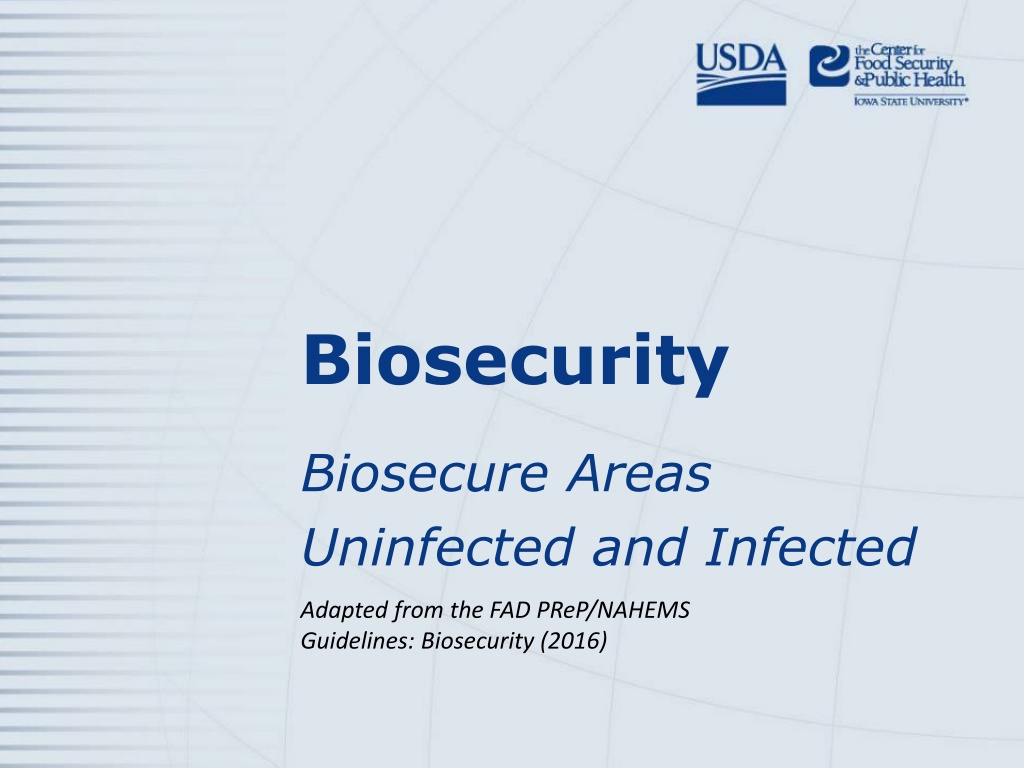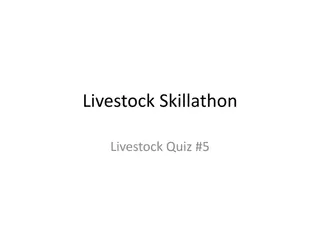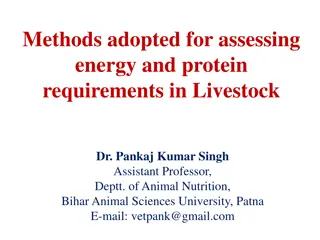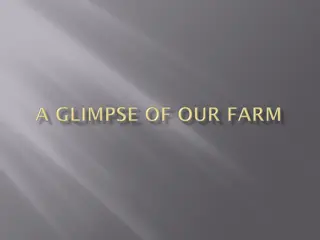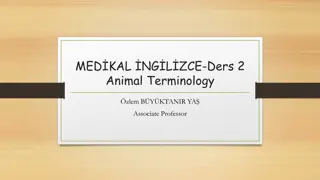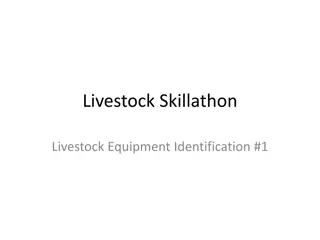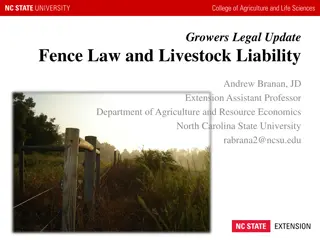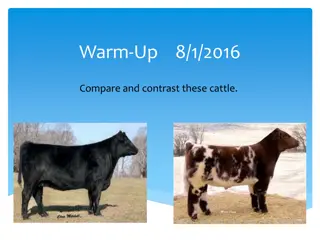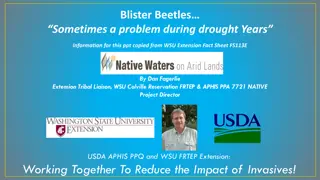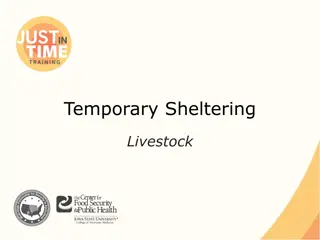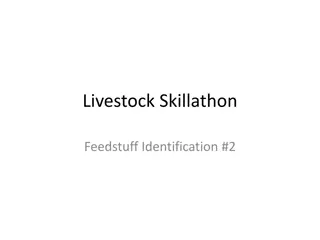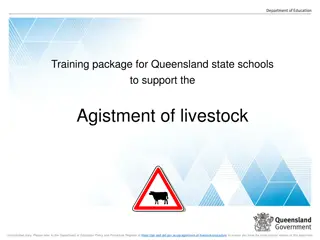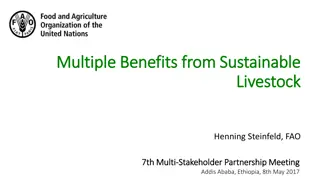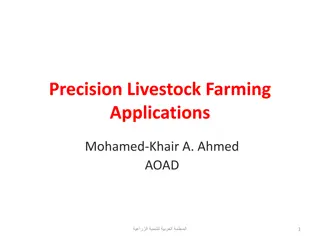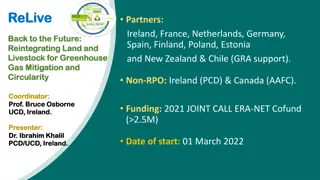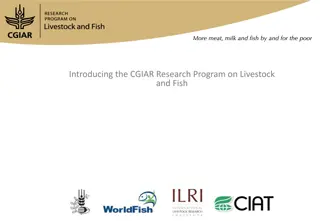Understanding Biosecure Areas in Livestock Management
This presentation showcases examples of biosecure areas in livestock management, emphasizing the importance of separating uninfected and infected premises to prevent the transfer of diseases. The guidelines outlined by FAD PReP/NAHEMS stress the need for a clear line of separation and strategic protocols based on housing, work paths, and animal health status. Various scenarios, including indoor and outdoor production systems for poultry (livestock), are illustrated to demonstrate best biosecurity practices.
Download Presentation

Please find below an Image/Link to download the presentation.
The content on the website is provided AS IS for your information and personal use only. It may not be sold, licensed, or shared on other websites without obtaining consent from the author. Download presentation by click this link. If you encounter any issues during the download, it is possible that the publisher has removed the file from their server.
E N D
Presentation Transcript
Biosecurity Biosecure Areas Uninfected and Infected Adapted from the FAD PReP/NAHEMS Guidelines: Biosecurity (2016)
This Presentation Illustrated examples of biosecure areas Uninfected premises Infected premises Line of Separation No transfer of disease Separates clean and dirty areas Location based on specific situation, facility arrangement, and animal health status FAD PReP/NAHEMS Guidelines: Biosecurity - Biosecure Areas USDA APHIS and CFSPH
Two Examples Provide broad guidance Separation based on housing, work paths, and animal health status Protocols implemented at the most strategic points Indoor and outdoor production, uninfected and infected FAD PReP/NAHEMS Guidelines: Biosecurity - Biosecure Areas USDA APHIS and CFSPH
Poultry (Livestock) Raised Indoors FAD PReP/NAHEMS Guidelines: Biosecurity - Biosecure Areas USDA APHIS and CFSPH
Uninfected Raised Indoors FAD PReP/NAHEMS Guidelines: Biosecurity - Biosecure Areas USDA APHIS and CFSPH
Uninfected Raised Indoors FAD PReP/NAHEMS Guidelines: Biosecurity - Biosecure Areas USDA APHIS and CFSPH
Infected Raised Indoors FAD PReP/NAHEMS Guidelines: Biosecurity - Biosecure Areas USDA APHIS and CFSPH
Infected Raised Indoors FAD PReP/NAHEMS Guidelines: Biosecurity - Biosecure Areas USDA APHIS and CFSPH
Poultry (Livestock) Raised Outdoors FAD PReP/NAHEMS Guidelines: Biosecurity - Biosecure Areas USDA APHIS and CFSPH
Uninfected Raised Outdoors FAD PReP/NAHEMS Guidelines: Biosecurity - Biosecure Areas USDA APHIS and CFSPH
Uninfected Raised Outdoors FAD PReP/NAHEMS Guidelines: Biosecurity - Biosecure Areas USDA APHIS and CFSPH
Infected Raised Outdoors FAD PReP/NAHEMS Guidelines: Biosecurity - Biosecure Areas USDA APHIS and CFSPH
Infected Raised Outdoors FAD PReP/NAHEMS Guidelines: Biosecurity - Biosecure Areas USDA APHIS and CFSPH
Conclusion Biosecurity is challenging for both bioexclusion and biocontainment Biosecure areas are designated on uninfected and infected premises Line of Separation is defended Protocols are similar to prevent the transfer of disease Evaluate according to the specific situation FAD PReP/NAHEMS Guidelines: Biosecurity - Biosecure Areas USDA APHIS and CFSPH
For More Information FAD PReP/NAHEMS Guidelines & SOP: Biosecurity (2016) http://www.aphis.usda.gov/fadprep Biosecurity web-based training module: http://naherc.sws.iastate.edu/ FAD PReP/NAHEMS Guidelines: Biosecurity - Biosecure Areas USDA APHIS and CFSPH
Guidelines Content Authors (CFSPH) Janice P. Mogan, DVM Heather Allen, PhD, MPA Kristen Bretz, MS Reviewers (USDA) Jonathan T. Zack, DVM James A. Roth, DVM, PhD, DACVM FAD PReP/NAHEMS Guidelines: Biosecurity - Biosecure Areas USDA APHIS and CFSPH
Acknowledgments Development of this presentation was by the Center for Food Security and Public Health at Iowa State University through funding from the USDA APHIS Veterinary Services PPT Authors: Janice P. Mogan, DVM; Logan Kilburn Reviewer: Kristen Bretz, MS
